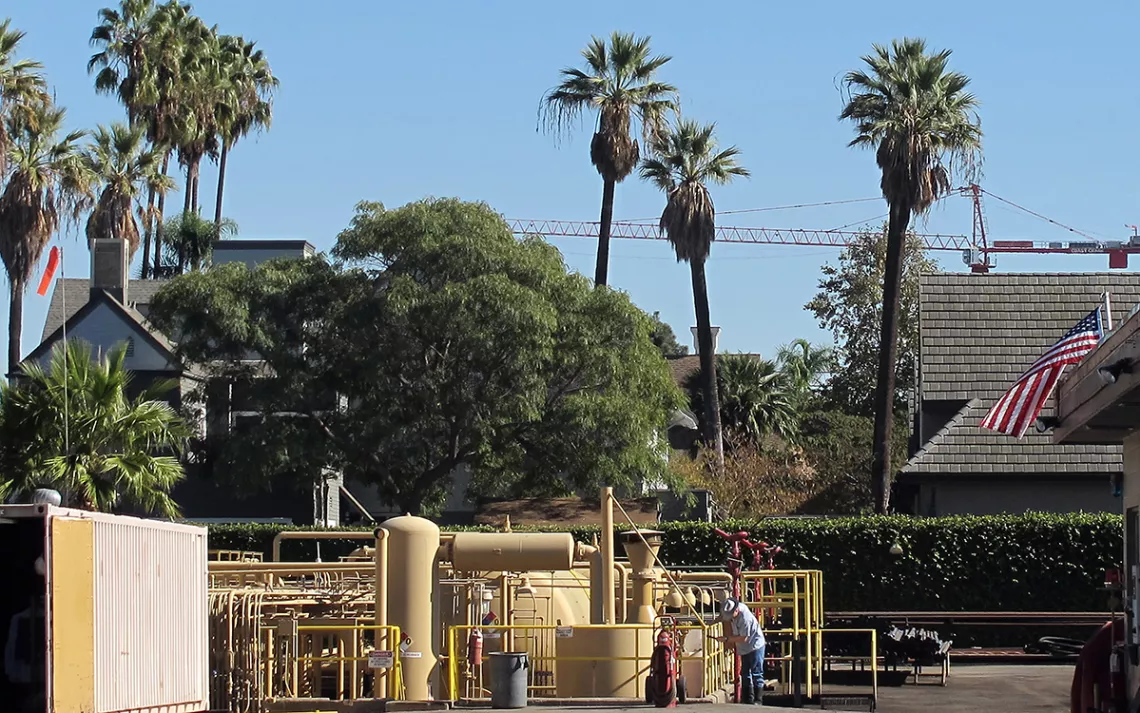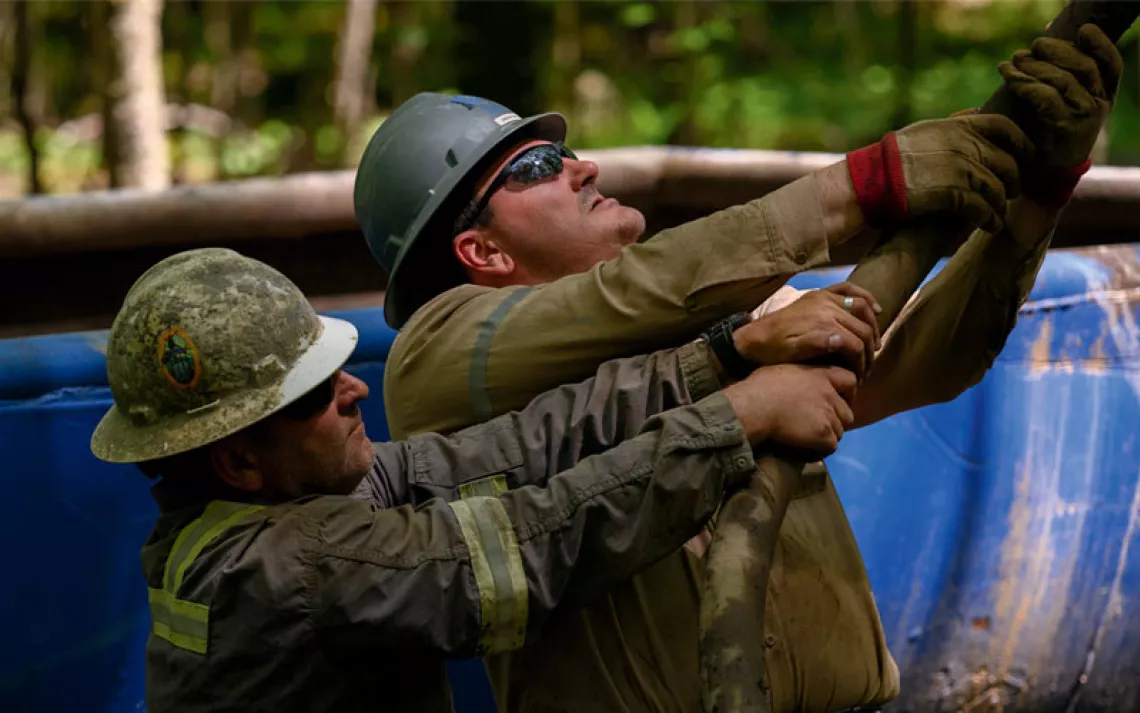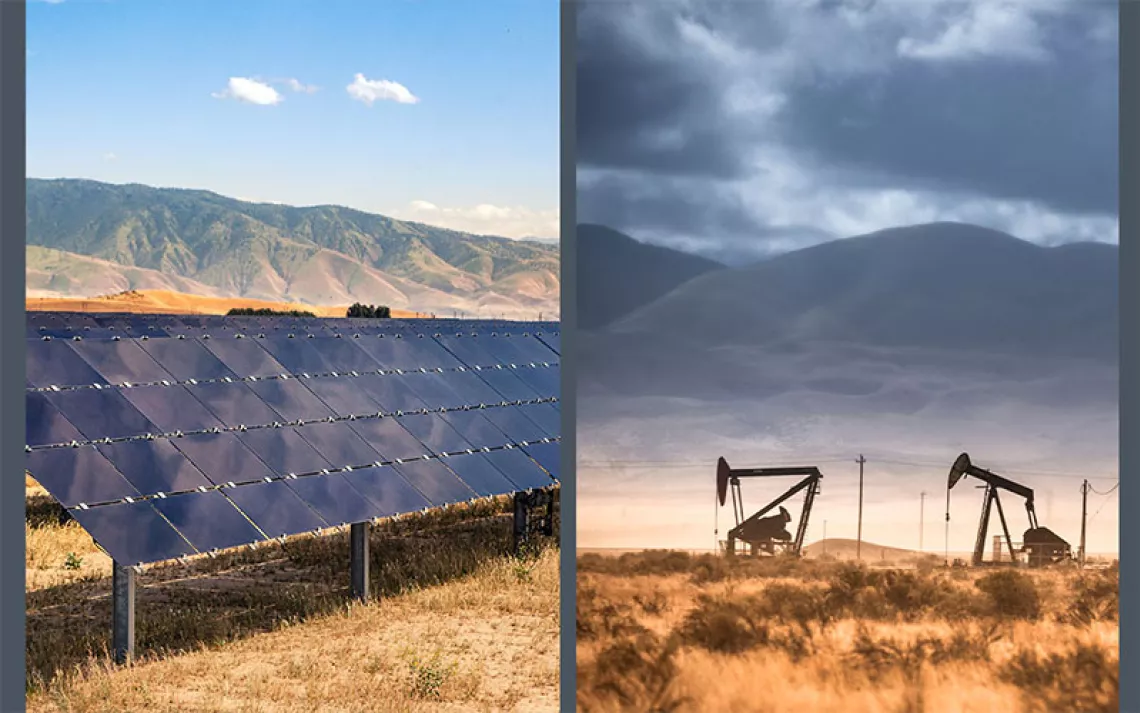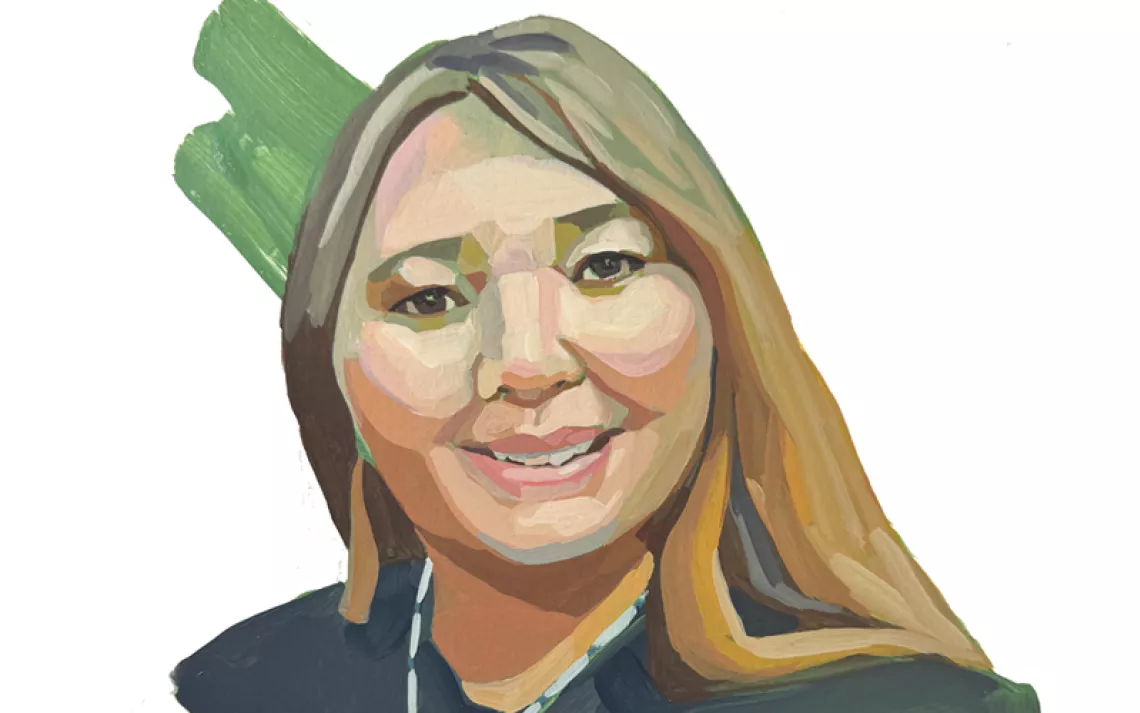It’s the Beginning of the End for Oil Drilling in Los Angeles
The backstory of how the nation’s second-argest city voted to move beyond oil

Photo by AP Photo/Nick Ut
In 2014, when the Phoenix-based mining and energy company Freeport-McMoRan proposed drilling a new injection well at the Jefferson Oil Field in South Los Angeles, more than 100 representatives of a newly formed coalition, Stand Together Against Neighborhood Drilling Los Angeles (STAND-LA), showed up at City Hall to object. Noxious fumes, deafening noise, and heavy truck traffic were already causing harm to the surrounding community. A children’s summer camp operated just 300 feet from the site.
The activists succeeded in getting the Los Angeles planning officer to delay her decision on the matter for 30 days. Shortly thereafter, the company withdrew its plans, citing rising gas prices.
But the fight didn’t end—or even begin—there. The year before, community organizers had already forced the Environmental Protection Agency to fine and temporarily shutter another South LA drilling site run by the Allenco Corporation. But what the coalition wanted was not just a delay here and a fine there. The community advocates were hoping for a wholesale ban on the practice of oil drilling in Los Angeles neighborhoods.
Bahram Fazeli, director of research and policy at Communities for a Better Environment, a STAND-LA coalition partner, remembers a city council member telling him (at the time) that the community demand wasn’t remotely possible. Now, eight years later, the grassroots demand to end oil drilling in Los Angeles isn’t just probable—it’s imminent. In late January, the Los Angeles City Council voted unanimously to take the first steps toward phasing out oil drilling within the city limits.
The city’s landmark vote—combined with a similar motion Los Angeles County passed in September—was the culmination of more than a decade of civic activism, led to a large degree by the residents whose health had suffered the most from the city’s legacy industry. “The communities were organized and persistent for many, many years,” Fazeli said. “People just did not give up.”
The vote was also a step forward for community-based environmental epidemiology, a branch of research that has not in the past been taken seriously by policymakers, regulators, and even some people in the scientific community itself. In communities like South LA that are burdened by multiple types of heavy industry, residents’ self-reported health problems can often be blamed on multiple, hard-to-trace causes; subjective health assessments only carry so much weight. “We live in a city that is clearly known for pollution,” says Jill Johnston, assistant professor of public health at the University of Southern California’s Keck School of Medicine. Regulators, policymakers, and “even the scientific community had questions for us like, ‘If we know communities are already impacted by poor air quality, how much can [oil drilling] matter?’”
In 2016, Johnston and a team of four other researchers set out to design a first-of-its-kind study, “a collaboration,” as Johnston puts it, “between community organizing and environmental health research.” It was a time when fears ran high among immigrants in the mostly Black and Latino communities. “People were concerned about going to the doctor,” Johnston says, never mind giving up their names and addresses for a data-driven health study. To gain their trust, the researchers relied heavily on collaborators from Esparanza Community Housing, which manages apartments in the neighborhoods, and Promotores de Salud, a community-health nonprofit. Eventually, they were able to recruit more than 900 participants.
Johnston and her research team compared air data from different neighborhoods that abut the same oilfield to isolate pollutants consistent across oil-adjacent neighborhoods—suggesting strongly that those chemicals came from drilling. They also brought in epidemiological literature from other oil-producing regions, as far afield as Ecuador and Nigeria, to find consistent reports of deleterious health effects among nearby residents. Finally, they had study participants blow into a spirometer to test lung capacity—an empirical measure of pulmonary function—and found incontrovertible evidence that living near an oil facility reduces the amount of air an individual’s lungs can hold.
Johnston’s study ended up being “a very important element of this campaign,” Fazeli says, and a potential model for measuring health impacts in other oil-producing areas of the state, such as Kern County, where residents also suffer from multiple sources of pollution (and whose health complaints aren’t always believed).
“Unfortunately,” Johnston says, “lived experience alone doesn’t push the policy conversations quite far enough.”
In the rest of California, those policy conversations about the future of oil and gas production still have a ways to go. Of the roughly 48,000 active wells in the state, only 704 are in the Los Angeles area; more than 35,000 still operate in Kern County, in the Central Valley, where public officials tend to be much more supportive of the industry. Governor Gavin Newsom has proposed phasing out oil drilling in the state by 2045 and establishing a 3,200-foot buffer zone between residential areas and fossil fuel operations. Neither one is certain.
Nor is the work in Los Angeles finished. What the city council passed was not a ban on drilling oil but the initial steps toward a drilling ban, says Eric Romann, director of strategy and campaigns with Physicians for Social Responsibility, another STAND-LA coalition partner. “We don't actually have a law on the books yet,” he says. “We have a motion that directs city departments to draft an ordinance that then will have to go through additional public review and return to the city council.” It will also direct “city departments to commission studies to determine the length of time that oil companies will have before they have to shut down.” The motion also has a just transition component, to ensure that Los Angeles’s 350-some workers in oil-related jobs aren’t left hanging.
In other words, oil will continue to be dragged out of the LA Basin’s dirty, played-out wells for at least a few more years. But the LA City Council vote is still, Romann says, “an enormous breakthrough. And it’s certainly the most important moment in our long campaign to end oil drilling in Los Angeles.”
 The Magazine of The Sierra Club
The Magazine of The Sierra Club



